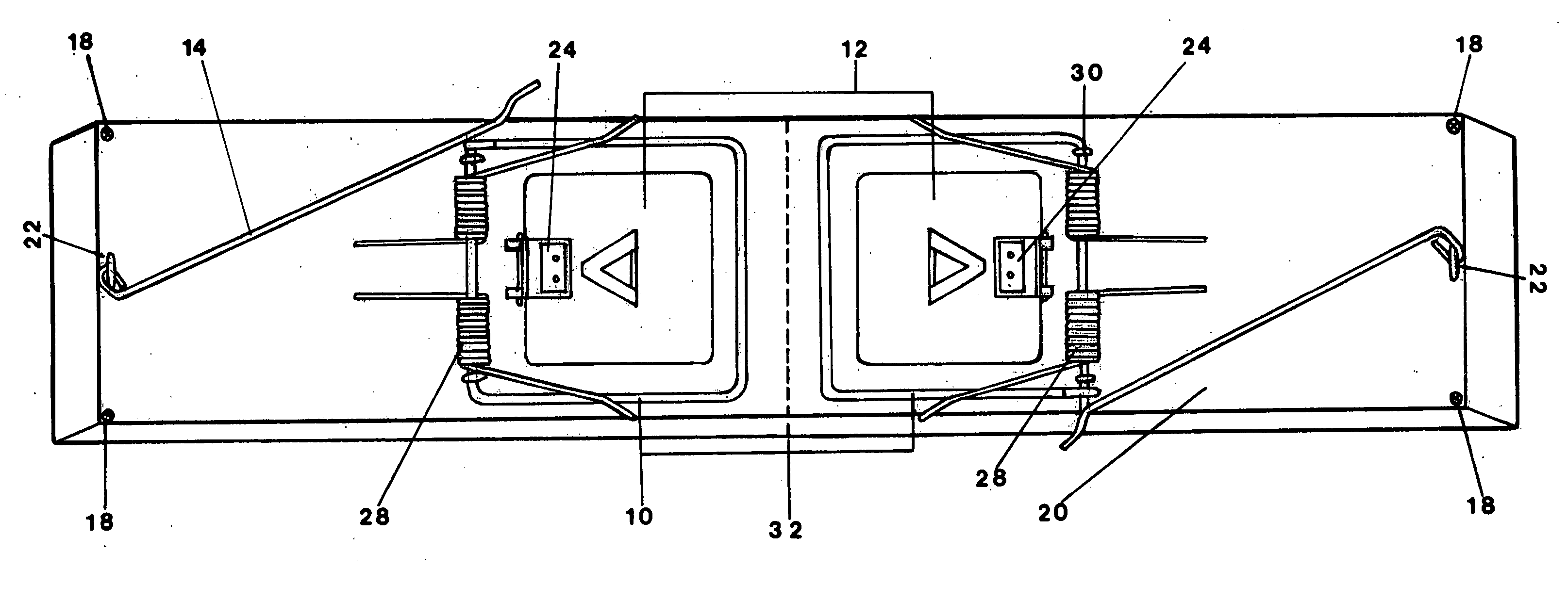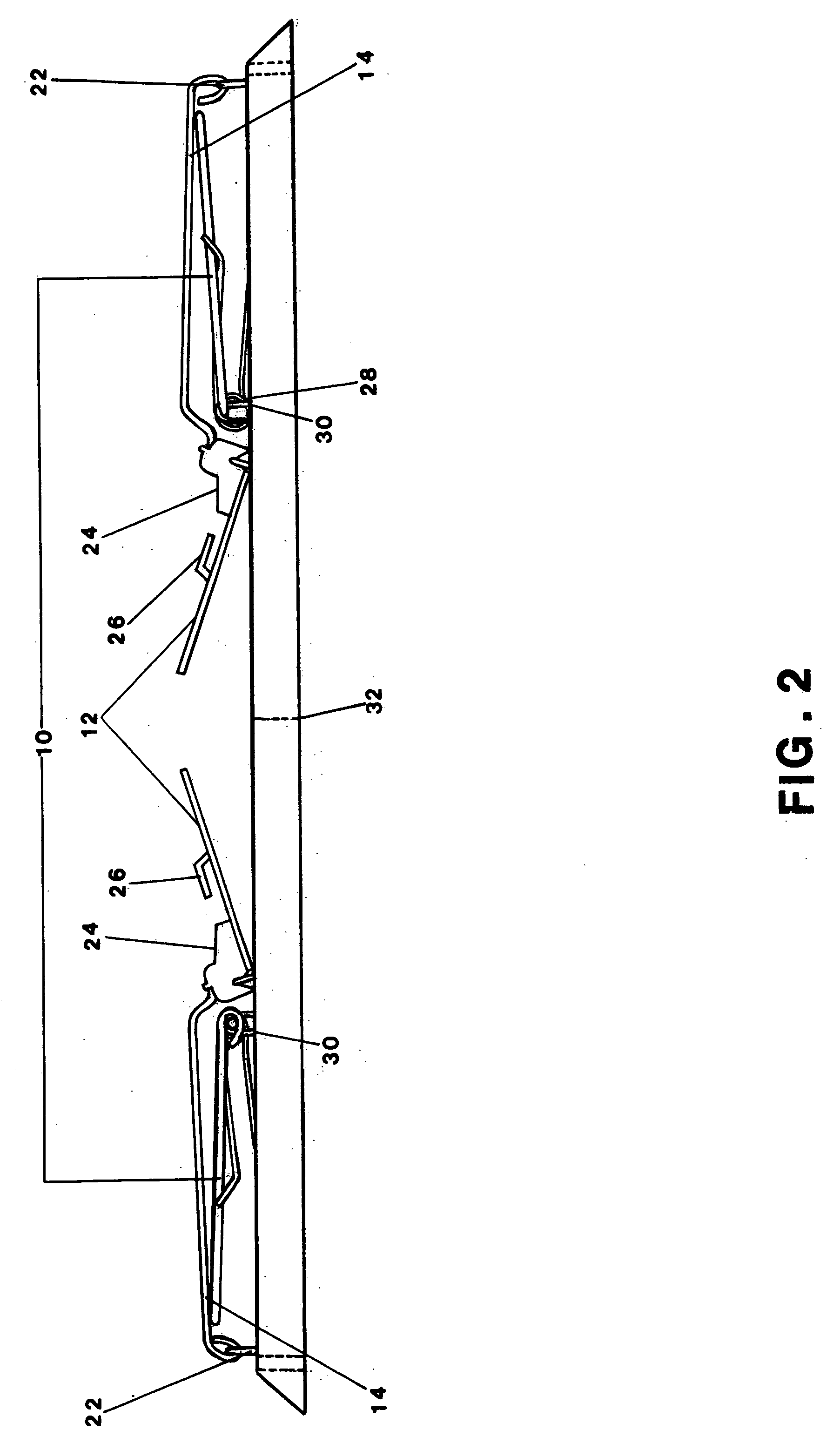Dual, inline, single action rat trap
a rat trap and single action technology, applied in the field can solve the problems of small animal traps, easy to be upended, and used by pest control professionals, and achieve the effect of traps, and reducing the number of rods
- Summary
- Abstract
- Description
- Claims
- Application Information
AI Technical Summary
Benefits of technology
Problems solved by technology
Method used
Image
Examples
Embodiment Construction
—FIG. 1-4—PREFERRED EMBODIMENT
[0036]The preferred—but not limited to—embodiment of the dual, inline, single / double action rattrap is illustrated in FIG. 1 (top view) and FIG. 3, (side view). The dual inline, single / double action rattrap has a sufficiently elongated main body portion 20 measuring 8.5 cm×40-45 cm, over 2× the overall length of a single throw, single action trap. In this preferred embodiment, the main body 20 is comprised of wood supporting the FSC, an organization responsible for forest management but may be manufactured out of any recyclable material, as long as it is able to facilitate ease and inexpensive mounting of plastic and metal hardware.
[0037]With this preferred embodiment, the main body 20 consists of two adjacent bait pedals 12, both of which are placed to the right and left of centerline, adjacent to and facing each other but not touching, pivoting on individual pivot points. The bait pedals 12 are solid in form, square in shape, approx 5 cm×5 cm, creatin...
PUM
 Login to View More
Login to View More Abstract
Description
Claims
Application Information
 Login to View More
Login to View More - R&D
- Intellectual Property
- Life Sciences
- Materials
- Tech Scout
- Unparalleled Data Quality
- Higher Quality Content
- 60% Fewer Hallucinations
Browse by: Latest US Patents, China's latest patents, Technical Efficacy Thesaurus, Application Domain, Technology Topic, Popular Technical Reports.
© 2025 PatSnap. All rights reserved.Legal|Privacy policy|Modern Slavery Act Transparency Statement|Sitemap|About US| Contact US: help@patsnap.com



